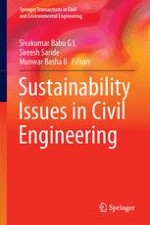2017 | OriginalPaper | Buchkapitel
6. Sustainable Design of Indian Rural Roads with Reclaimed Asphalt Materials
verfasst von : Sireesh Saride, Anu M. George, Deepti Avirneni, B. Munwar Basha
Erschienen in: Sustainability Issues in Civil Engineering
Verlag: Springer Singapore
Aktivieren Sie unsere intelligente Suche, um passende Fachinhalte oder Patente zu finden.
Wählen Sie Textabschnitte aus um mit Künstlicher Intelligenz passenden Patente zu finden. powered by
Markieren Sie Textabschnitte, um KI-gestützt weitere passende Inhalte zu finden. powered by
